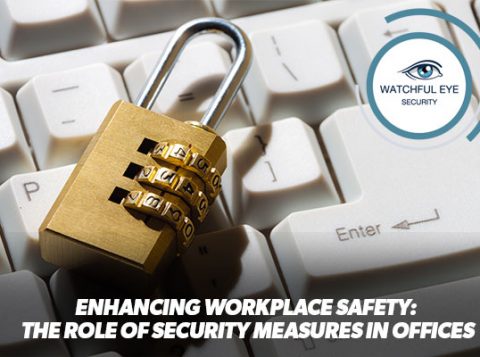
Reducing Risks and Ensuring Security: A Guide to Conducting a Thorough Risk Assessment for Your Business
Running a successful business involves taking calculated risks, but it also means being prepared for potential risks and security threats. As a business owner, it is your responsibility to conduct a thorough risk assessment and determine your specific security needs in order to protect your organisation and its assets. In this article, we will guide you through the process of conducting a risk assessment and explain why it is crucial to consider the impact of your decisions in order to make informed and effective security choices. What is a Risk Assessment? A risk assessment is a systematic process of identifying and evaluating potential threats, hazards and vulnerabilities that could negatively impact your business. It involves analyzing the likelihood and potential severity of these risks and determining the best ways to mitigate them. A comprehensive risk assessment covers various areas including physical security, cyber security, financial security, and legal compliance. Step-by-Step Guide to Conducting a Risk Assessment for Your Business
1. Identify Potential Risks: Start by identifying all potential risks that could affect your business. This could include natural disasters, accidents, theft, cyber attacks, financial fraud, and legal issues.
2. Evaluate the Likelihood and Impact of Risks: Once you have identified the potential risks, evaluate how likely they are to occur and the potential impact they could have on your business. This step will help you prioritise which risks require immediate attention.
3. Identify Existing Controls: Assess the current safety and security measures you have in place. This could include security systems, policies and procedures, insurance coverage, and emergency plans.
4. Determine Vulnerabilities: Identify any weaknesses or vulnerabilities in your current security measures that could leave your business at risk. This could include outdated technology, lack of employee training, or inadequate insurance coverage.
5. Analyze the Impact of Decisions: Consider the potential impact on your business when making decisions on how to address the identified risks. This includes evaluating financial, operational, and reputation consequences.
6. Choose Appropriate Controls: Based on your risk assessment, determine the most effective and feasible security controls for each identified risk. These could include implementing new security protocols, updating technology, or investing in employee training.
7. Monitor and Update: A risk assessment is an ongoing process, therefore, it is important to regularly review and update it. As your business evolves, so do the potential risks and security needs. Importance of Considering the Impact on Your Business.
When conducting a risk assessment, it’s vital to consider the impact your decisions will have on your business. A security control that is not well thought out or doesn’t align with your business goals could end up causing more harm than good. For example, investing in expensive security equipment may provide a false sense of security but could strain your budget and hinder business growth. On the other hand, neglecting necessary security measures could leave your business vulnerable to potential risks and lead to devastating consequences. Determining Your Specific Security Needs Every business is unique and therefore requires a tailored approach to security. A comprehensive risk assessment will help you identify your specific security needs and provide a roadmap for implementing effective security measures. It will also give you a better understanding of potential risks and allow you to allocate resources and budget accordingly.
In conclusion, conducting a thorough risk assessment is crucial for protecting your business from potential risks and security threats. It gives you a complete picture of your business’s vulnerabilities and helps you determine the best ways to mitigate these risks. Remember to consider the impact of your decisions and regularly review and update your risk assessment to ensure your business is well-protected. By taking proactive steps to assess and address potential risks, you can safeguard your business and ensure its long-term success.

























































































































































